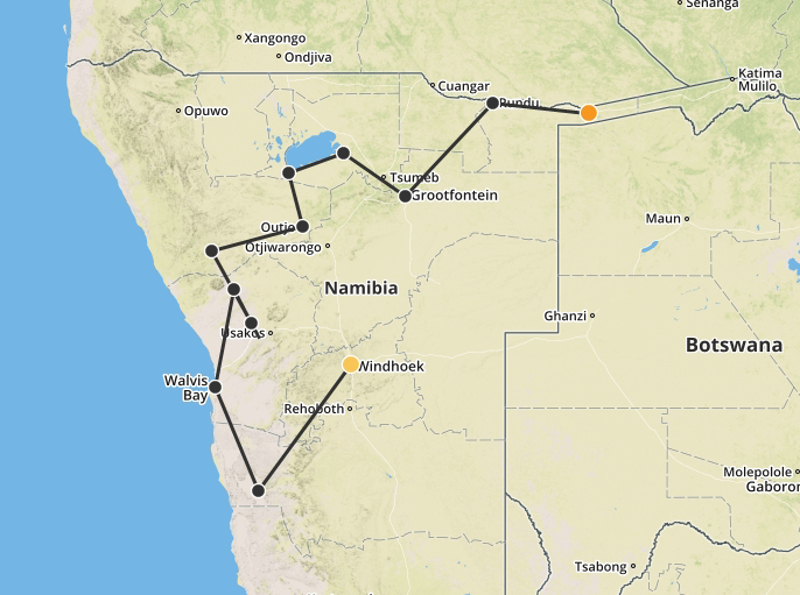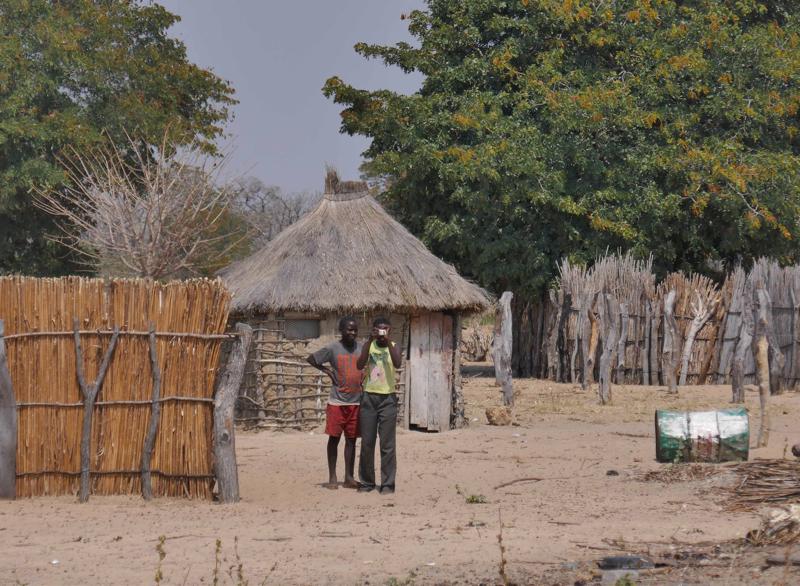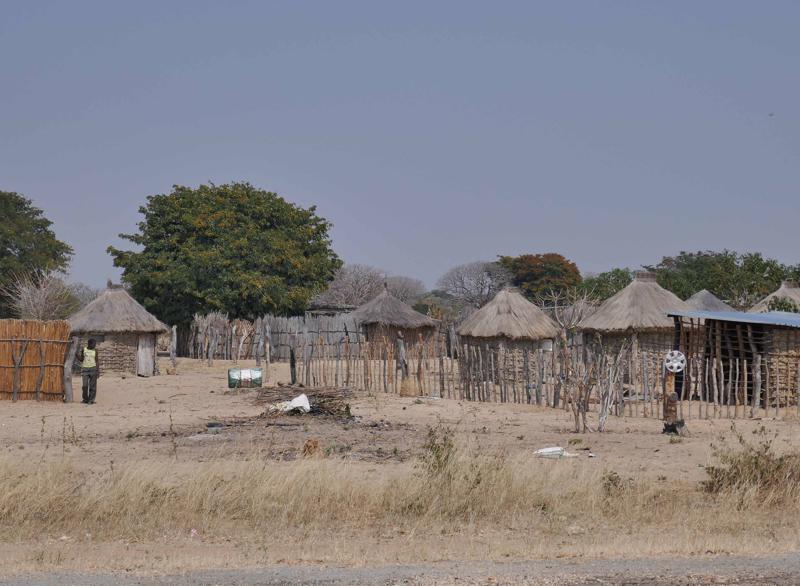Around the World in Many Days, I: South West Africa
After Etosha we travelled more than 600 kilometres through north-eastern Namibia (via Grootfontein, Rundu and Divundu) en route to the Caprivi strip.
This region was remarkably different from the one we had previously experienced, in the Namib desert and Damaraland. Most noticeably, it was greener, with trees everywhere, as well as bushes, and
R S
14 chapters
16 Apr 2020
[Namibia] Chapter VIII: In which N drives rather faster, perhaps, than before
August 31, 2017
|
En route to Caprivi, Namibia, 31 August to 2 September 2017
After Etosha we travelled more than 600 kilometres through north-eastern Namibia (via Grootfontein, Rundu and Divundu) en route to the Caprivi strip.
This region was remarkably different from the one we had previously experienced, in the Namib desert and Damaraland. Most noticeably, it was greener, with trees everywhere, as well as bushes, and

sometimes even green --- rather than yellow --- grass.
Additionally, it was much more populated, with numerous small enclosures lining the road for many kilometres, especially on the outskirts of Rundu. Each such enclosure, possibly an extended family, was encircled by a fence of sticks, and was composed of a handful of structures or more, mostly traditional one-room huts with thatched roofs, occasionally supplemented by corrugated metal shacks, and rarely by one-storey brick houses. Around these enclosures, people were going about their days, men herding goats or cows, women raking tiny vegetable patches, teenagers carrying empty jerrycans for long distances in one direction only to return back with them full of water later on, children playing kick-the-dirt, toddlers waving at the passing cars, dogs digging in rubbish heaps, hens pecking and clucking.
And last but not least, the main road was paved throughout, allowing for travel at much more reasonable speeds.
The peculiarly mixed nature of the communities we saw, at once both urban and rural, was best exemplified when we visited the largest supermarket in Rundu, a city of more than sixty thousand people. At the entrance to this supermarket --- a modern supermarket which would not have felt out of place in any Western town --- there hung a large billboard advertising a contest or lottery that the supermarket was holding among its customers. But what stood out to us was the grand prize offered: twenty heifers.
Accommodations:
- Meteor Travel Inn, Grootfontein (1 nights; nice enough, if you ignore the run-down neighbourhood)
- Niilo's Guesthouse, Rundu (1 night; pretty nice)
Photo captions: (a) a rural enclosure; (b) a traditional hut


1.
[Namibia] Chapter I: In which N and R kiss each other, the one as woman, the other as man
2.
[Namibia] Chapter II: In which N is unconvinced that she has at last found her ideal diurnal cycle
3.
[Namibia] Chapter III: In which a sandstorm takes place which seems likely to cost no one dear
4.
[Namibia] Chapter IV: In which Walvis Bay astounds us, its pilgrims
5.
[Namibia] Chapter V: In which a new species of roads, unknown to the calm men, appears in Damaraland
6.
[Namibia] Chapter VI: In which we, the travellers, betray a very natural impatience
7.
[Namibia] Chapter VII: Which once more demonstrates the usefulness of water as an aid to eyesight
8.
[Namibia] Chapter VIII: In which N drives rather faster, perhaps, than before
9.
[Namibia] Chapter IX: In which the Kavango and the Mahango prove propitious to our designs
10.
[Namibia] Chapter X: In which we are only too glad to get off with the loss of our air conditioning
11.
[Namibia] Chapter XI: In which N secures a curious means of lodging at a fabulous price
12.
[Botswana] Chapter XII: In which we venture across the Botswana border, and what ensued
13.
[Zimbabwe, Zambia] Chapter XIII: In which N receives a new proof that fortune favours the brave
14.
Summary of Part I and Onwards to Part II
Share your travel adventures like this!
Create your own travel blog in one step
Share with friends and family to follow your journey
Easy set up, no technical knowledge needed and unlimited storage!